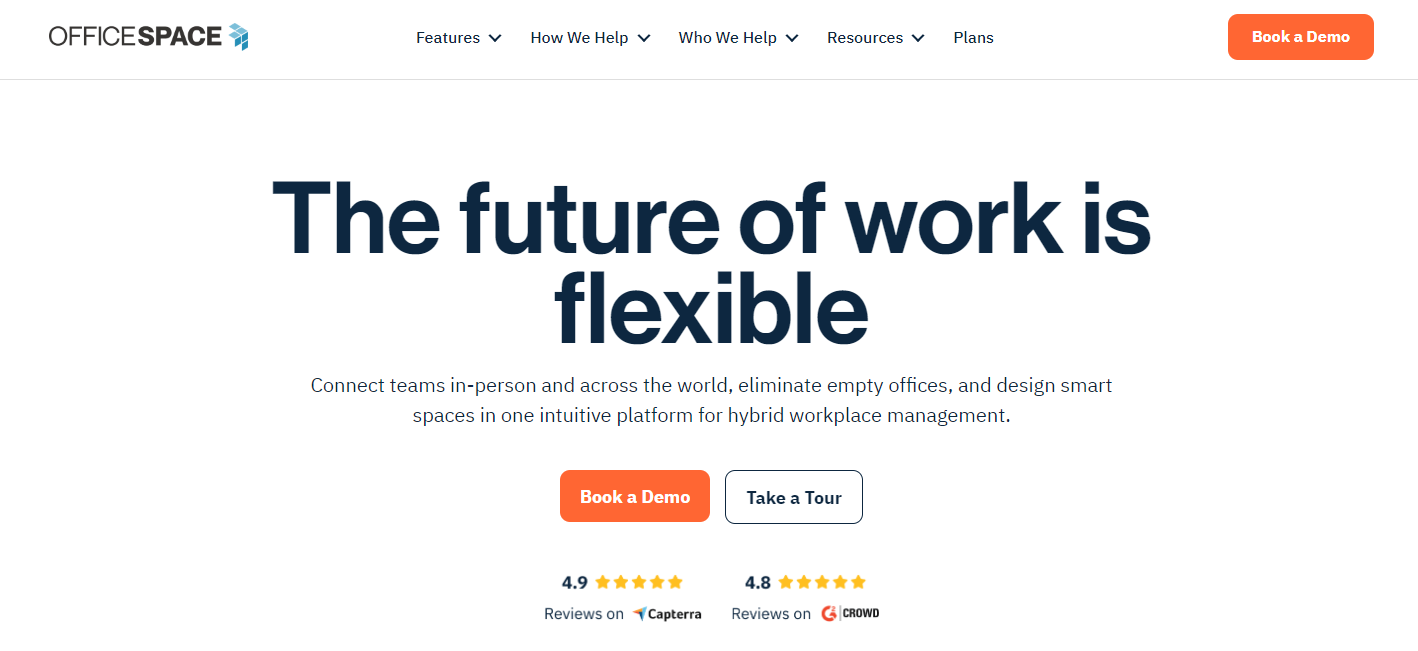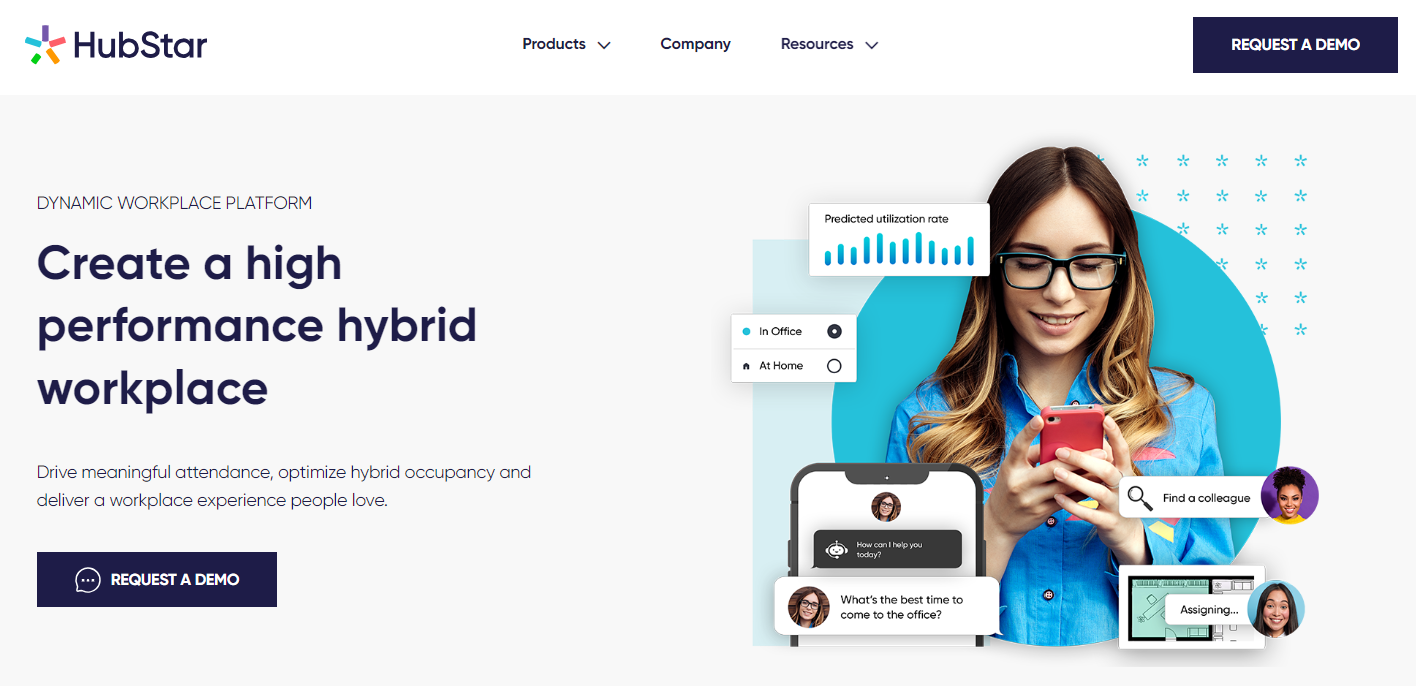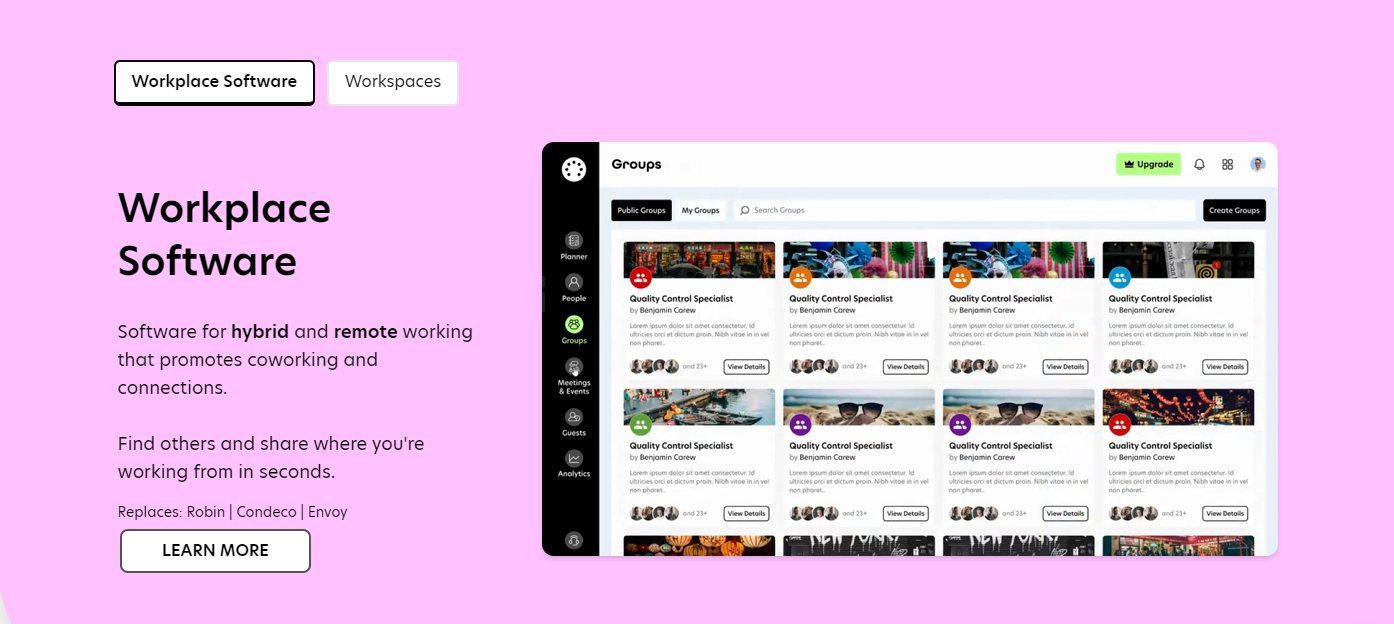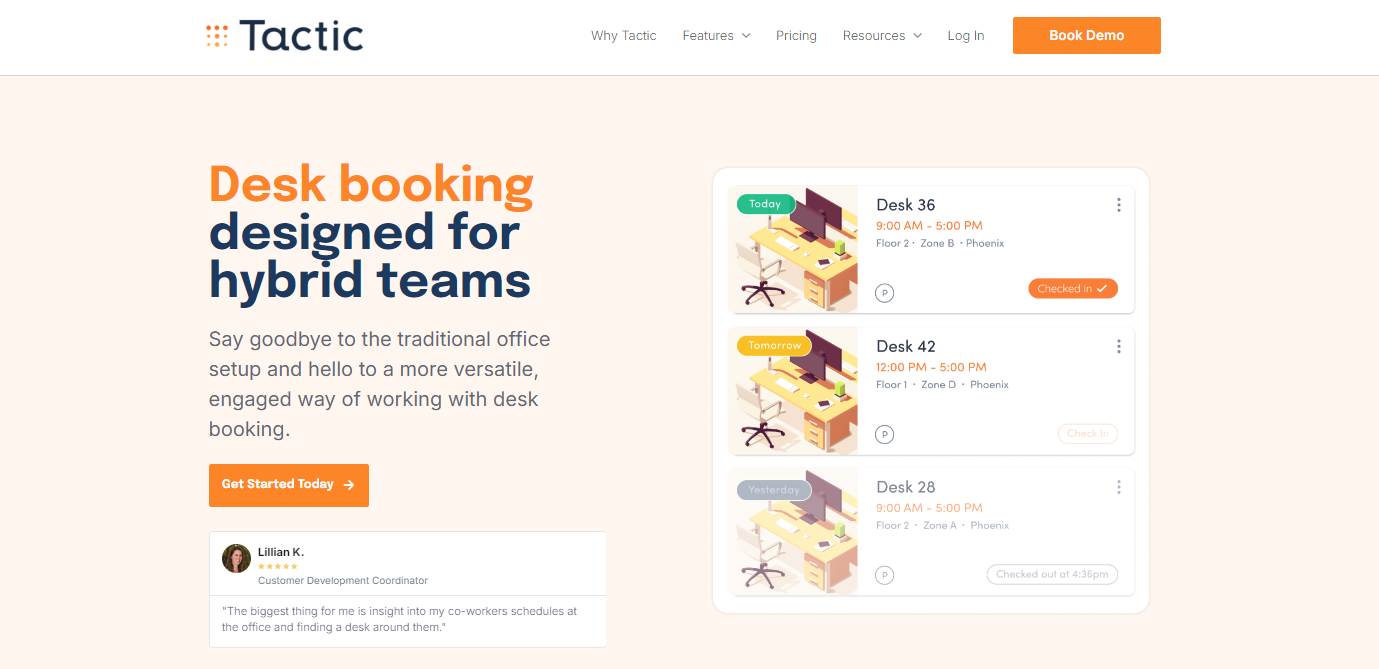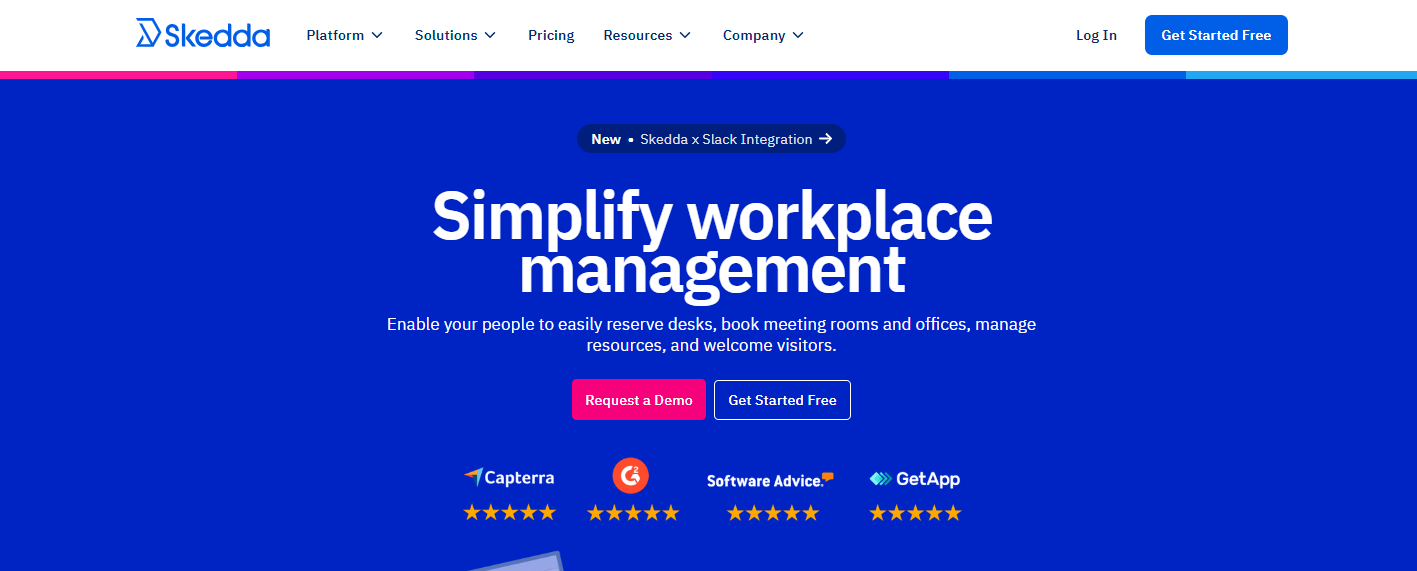
6 Best Workspace Management Software of 2024
The way businesses manage their office space has evolved. Hybrid work models, flexible office layouts, and the need to optimize space usage are more important than ever.
This is where workspace management software comes in—helping businesses streamline their operations, reduce costs, and improve employee satisfaction.
Workspace management software enables companies to manage and optimize their office spaces, ensuring that every square foot is used to its full potential.
Let’s explore the features, benefits, and tools that make workspace management software a must-have for businesses today.
What is Workspace Management Software?
Workspace management software refers to digital tools designed to help businesses manage their office spaces, streamline operations, and maximize space utilization.
These tools integrate various office management tasks into a single platform, from desk booking to visitor management, ensuring that space is used efficiently and effectively.
An integrated workplace management software goes beyond simple desk booking. It combines different aspects of office management, including asset management, space planning, and collaboration tools for hybrid teams.
With real-time data and space management solutions, businesses can make data-driven decisions to optimize the use of their physical office spaces.
Key Functions:
- Desk and room booking: Employees can easily book desks and meeting rooms in real time, reducing scheduling conflicts.
- Space utilization: Provides insights into how often different areas of the office are used, allowing businesses to reallocate resources as needed.
- Visitor management: A streamlined check-in process for visitors, with access control to manage office security.
- Workplace analytics: Collects and analyzes data on office space utilization, enabling businesses to make informed decisions about their office layout and operations.
6 Workplace Management Software
Managing office spaces effectively is crucial, especially in the era of hybrid work environments. Businesses need workspace management to assure optimal space utilization, improve employee experience, and support flexible work arrangements.
Below are six of the best workspace management solutions that can help streamline your office operations and maximize productivity.
1. DeskFlex
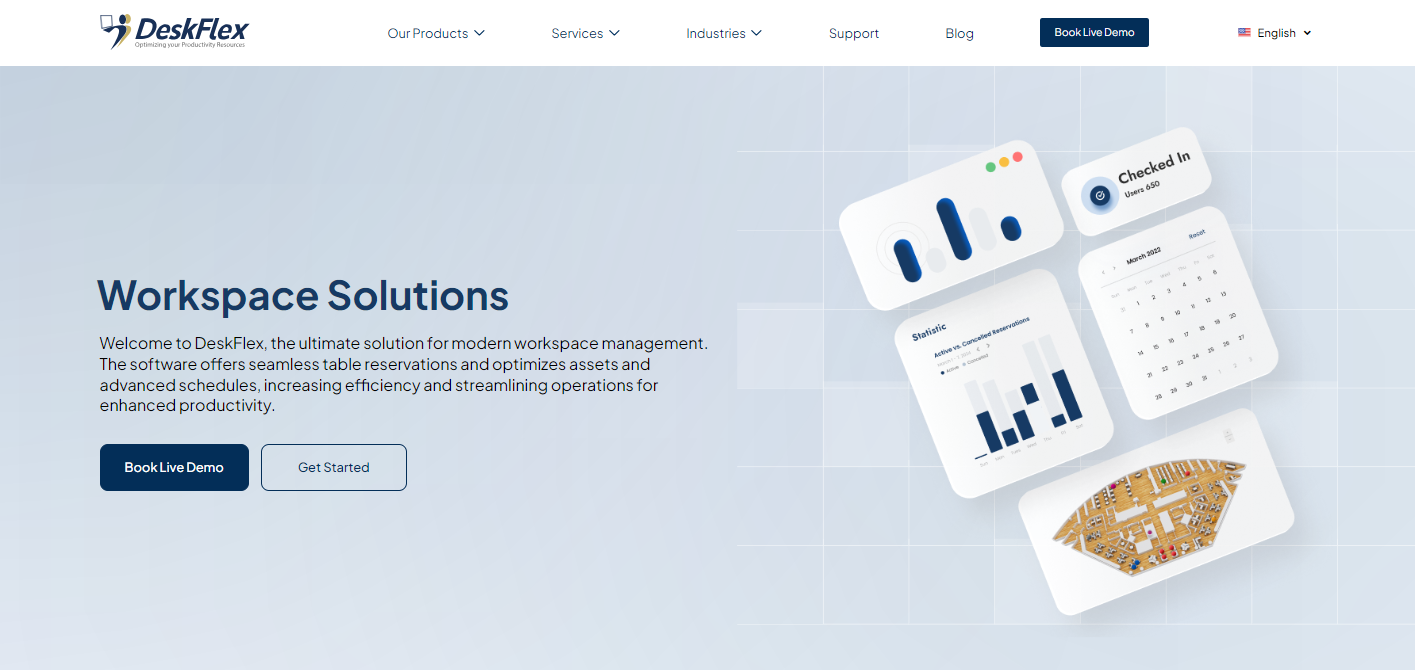
DeskFlex is a versatile workspace management software designed specifically for hybrid work environments. It offers tools to manage desk bookings, meeting room reservations, and overall space utilization for hybrid teams.
With DeskFlex, employees can easily book desks and meeting rooms from a single platform, making it a go-to solution for businesses looking to optimize their office spaces and maximize productivity in hybrid workplaces.
Key features:
- Desk booking software that supports both desk hoteling and hot desking for flexible work environments.
- Real-time space management with detailed analytics on space utilization and office traffic.
- Integration with Office 365, Zapier, and Microsoft Outlook for seamless meeting scheduling.
- Visitor management and access control features to enhance office security and ensure a smooth visitor experience.
- 3D floor maps that bring your office layout to real life.
2. OfficeSpace
Source: OfficeSpace
OfficeSpace is a workspace management platform that focuses on scenario planning for businesses.
This feature is essential for companies looking to test different office layouts, seating arrangements, or floor plan changes to find the optimal configuration for their needs.
OfficeSpace allows businesses to simulate various office setups before implementing them, helping to predict potential space utilization and avoid costly mistakes.
Its main features are:
- Scenario planning tools for testing multiple office layouts.
- Real-time data on desk usage, room availability, and office traffic.
- Space management features that optimize office layout for maximum efficiency.
- Integration with digital signage to help employees find their reserved desks or rooms.
3. HubStar
Source: Hubstar
HubStar is a workspace management solution for businesses that need detailed analytics on planned versus actual space usage.
HubStar’s comprehensive workplace management software allows businesses to track how office spaces are used compared to how they were planned to be used.
It offers:
- Data-driven decisions through real-time reporting and analytics.
- Insights into actual versus planned space utilization for informed office management.
- Meeting room and desk booking software to support hybrid work setups.
- Integration with Microsoft Teams for seamless meeting scheduling.
4. Othership
Source: Othership
Othership is a flexible workspace management solution designed to enhance office space usage and optimize collaboration time among employees.
As more companies shift to hybrid models, where employees are in the office only on certain days, Othership helps businesses coordinate in-person collaboration effectively.
Othership’s features include:
- Real-time desk booking and meeting room reservations for employees working both remotely and on-site.
- Collaboration tools that allow team members to plan their in-office days for face-to-face interactions.
- Workspace analytics to track how office resources are used and identify underutilized areas.
- Integration with popular tools like Slack and Microsoft Teams to facilitate communication among hybrid teams.
5. Tactic
Source: Tatic
Tactic is a suitable option for managing hybrid teams, offering tools to facilitate collaboration between employees who split their time between the office and remote work.
Its workplace management system enables businesses to manage desk bookings, meeting rooms, and office layouts to support the flexibility required in hybrid work environments.
Tactic’s features include:
- Desk booking software that supports hot desking and desk hoteling for hybrid employees.
- Availability of meeting rooms and private office spaces.
- Collaboration features that allow hybrid teams to coordinate in-office days and meeting times.
- Detailed workplace analytics to help optimize office layout based on actual space usage.
6. Skedda
Source: Skedda
Skedda is known for its fast and efficient implementation process, making it suitable for businesses that need to deploy a space management solution quickly.
With a user-friendly interface and robust desk booking and meeting room management tools, Skedda is for companies looking for a fast yet comprehensive solution to manage their office space effectively.
Skedda’s features include:
- Quick and easy setup, allowing businesses to start managing their office spaces immediately.
- Desk booking software with real-time availability for desks, meeting rooms, and shared office spaces.
- Integration with Google Calendar and Microsoft Outlook for seamless scheduling.
- Custom booking rules that can be tailored to your business’s specific needs.
If you want to learn more workspace management solutions, you can check Envoy alternatives, Robin alternatives, and Skedda alternatives.
Key Features of Workspace Management Software
These systems offer a wide range of features that help optimize space usage, improve employee experience, and ensure seamless daily operations.
Desk Booking and Meeting Room Reservations
One of the most important features of workplace efficiency is the ability to reserve desks and book rooms in real time.
Employees can use desk booking software to see available desks and make reservations based on their schedule.
Similarly, meeting rooms can be booked online in advance, avoiding double bookings and ensuring that team meetings run smoothly.
Space Usage and Optimization
Space is one of the most valuable assets a business has, and making the best use of it is essential.
Workspace management offers space usage tools that help businesses monitor how their office spaces are being used, contributing to the efficient management of the company’s real estate portfolio.
This includes tracking how often meeting rooms, desks, and other office resources are in use. The software provides data on underused areas, allowing businesses to reconfigure their layout for better space management.
Visitor Management and Access Control
Many workspace management solutions include visitor management features. These tools allow businesses to manage guests, track who enters the office, and ensure proper access control.
This feature is particularly useful for businesses with sensitive data or those that need to maintain a high level of security.
Digital Signage and Wayfinding
Another key feature of workspace management is digital signage. This feature helps employees and visitors navigate the office by displaying real-time information on available meeting rooms, booked desks, and other resources.
Wayfinding solutions are especially useful in large offices or multi-location businesses, providing a seamless experience for anyone entering the office.
Steps to Implementing Workplace Management Software
Whether you’re managing a hybrid workforce or optimizing space usage, following a structured plan guarantees that you select the right system, meet your company’s needs, and maximize the software’s benefits.
1. Assess Your Space Needs
Before implementing workspace management software, it’s essential to evaluate your business’s current and future space requirements. Start by analyzing the number of employees, meeting rooms, and office spaces you currently have.
Conduct a thorough space audit to identify unused areas, empty desks, or meeting rooms. Understanding these factors will help you choose a system that meets your specific needs and maximizes the efficiency of your office space.
2. Select the Right Software Solution
When choosing space management software, look for key features such as real-time desk and room availability, integration with calendar tools, and data analytics for space usage.
Compare different platforms based on ease of use, scalability, and how well they align with your business’s goals.
Consider solutions that offer flexible workspace options, support hybrid work environments, and can be tailored to your company’s unique needs.
3. Train Employees and Admins on the System
Once the software is selected, proper training is important for a smooth implementation. Educate both employees and admins on how to use the system, including the booking processes and how to access real-time data on desk availability.
Automating tasks like desk reservations and space allocation will also help streamline operations. A well-trained team ensures that the software is used effectively, leading to better space management and a more productive work environment.
Optimize Hybrid Workplace Management with DeskFlex
DeskFlex is the perfect solution for making your digital workplace run smoothly, especially if your team is navigating a hybrid or flexible work environment. Let’s break down how DeskFlex can help:
- Simple desk booking: DeskFlex makes it easy for employees to reserve a desk or workstation when they need it. No more scrambling to find a spot in the office. Employees can check availability and book a desk ahead of time, making sure they have a place to work when they come in.
- Room and resource scheduling: Need a meeting room or special equipment? DeskFlex has you covered. It lets employees book conference rooms or other office resources just as easily as desks. This keeps everything organized and prevents double booking or fighting over spaces.
- Hybrid work management: For businesses juggling both in-office and remote work, DeskFlex makes managing it all a breeze. It helps you balance office attendance, track who’s coming in, and even manage hot-desking policies. You’ll know exactly how your office space is being used and can adjust it based on real-time data.
Ready to optimize your workspace and improve flexibility? Book a live demo today!
FAQs About Workspace Management Software
What is workspace management software?
Workspace management software refers to digital tools that help businesses manage and optimize their office spaces.
Workspace management software ensures that office spaces are used efficiently, minimizing wasted space and improving overall office operations.
What is workspace software?
Workspace software is a broader term that includes any software solution designed to improve workplace operations.
This can range from tools that manage physical office spaces, such as desk booking software, to collaboration platforms like Microsoft Teams or Slack that support team communication and project management.
What is workspace management?
Workspace management involves overseeing and optimizing the use of office spaces to improve efficiency, support hybrid work models, and enhance employee experience.
It includes managing desk availability, meeting room reservations, and overall office layouts to ensure the effective use of resources and spaces.
What does a workspace manager do?
A workspace manager is responsible for overseeing the physical office environment, including private office space. This role involves managing space usage, optimizing office layouts, coordinating desk and meeting room bookings, and ensuring that the office meets the needs of both on-site and remote employees.
They also use workspace management software to track and analyze space usage for better resource allocation.













































